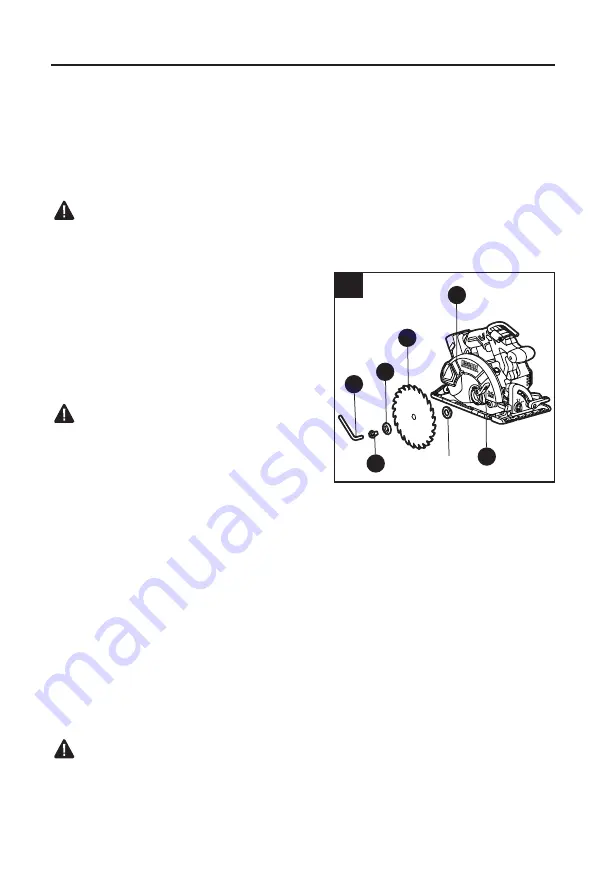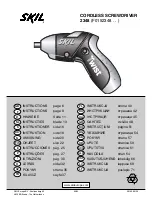
12
OPERATING INSTRUCTIONS
3. Saw Blades
The best saw blades will not cut efficiently if they are not kept clean, sharp, and properly set.
Using a dull blade will place a heavy load on the saw and increase the danger of kickback.
Keep extra blades on hand so sharp blades are always available.
Gum and resin on blades will slow the saw down. Follow the instructions for removing a saw
blade and use gum and resin remover, hot water, or kerosene to remove these accumulations.
WARNING
• Do not use gasoline to clean the blade.
• To reduce the risk of injury, wear gloves when installing or removing a saw blade.
Installing a Saw Blade
a. Remove the battery pack from the saw.
b. Depress and hold the spindle-lock button (R).
c. Loosen the blade bolt (H) by turning it
counterclockwise with the blade wrench (X)
(included).
d. Remove the blade bolt and blade outer
flange (I).
WARNING
• If the inner flange has been removed, replace it
before placing the blade on the spindle. Failure
to do so will prevent the blade from tightening
properly and could result in serious personal
injury.
e. Use the blade-guard lever (F) to retract the lower blade guard (G) into the upper blade
guard (E).
f. Fit the saw blade (J) inside the lower blade guard and onto the spindle. Verify that the saw
teeth, the arrow on the saw blade, and the blade-rotation indicator arrow on the blade
guard are all pointing in the same direction.
NOTICE
: The saw teeth should point upward at the front of the saw.
g. Replace the outer blade flange with the protuberant facing outward.
h. Depress and hold the spindle-lock button and replace the washer and blade bolt.
i. Tighten the blade bolt securely by turning it clockwise with the blade wrench.
NOTICE:
Never use a blade that is too thick to allow the outer blade flange to engage with the
flat section of the spindle.
WARNING
• To prevent personal injury, always remove the battery pack before installing or removing the
saw blade.
3
E
X
I
J
H
F
Inner flange













































